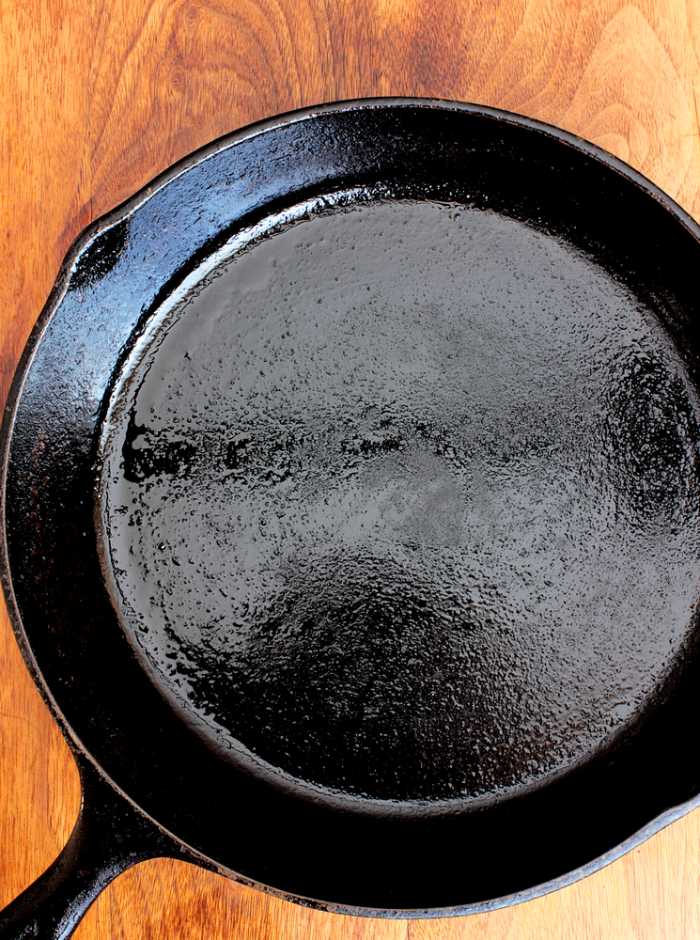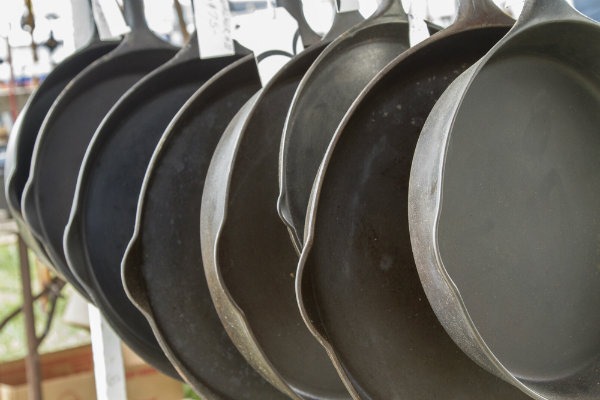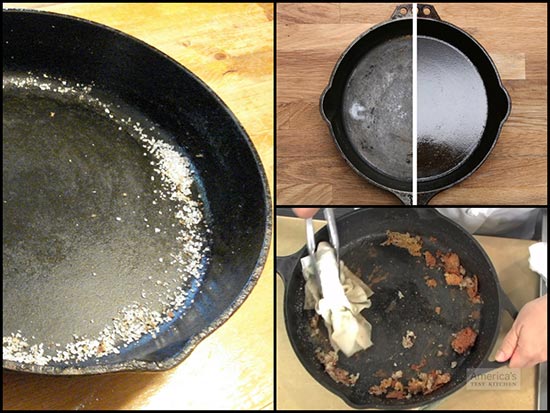How To Care and Season a Cast Iron Skillet

Make sure to like Living Green and Frugally on Facebook, Shop at Amazon to help support my site and explore our PINTEREST BOARDS for innovative ways you can become self-sufficient.
Cast iron skillets are beloved by professional chefs and home cooks alike for their ability to retain heat and develop a natural non-stick surface over time. However, caring for a cast iron skillet properly can seem intimidating to the uninitiated.
The good news is that with proper care and seasoning, your skillet can last for generations, delivering perfect sears, crispy edges, and even heat distribution. In this guide, we’ll walk you through the steps to care for and season your cast iron skillet to ensure its longevity.

Why Cast Iron?
Cast iron skillets are incredibly durable, versatile, and improve with use. Here’s why they’re worth the investment:
- Heat Retention: Cast iron retains and evenly distributes heat, making it perfect for searing, frying, baking, and roasting.
- Durability: Cast iron skillets are known to last a lifetime (or longer), often passed down through generations.
- Natural Non-stick Surface: With proper seasoning, the skillet develops a slick surface that rivals synthetic non-stick coatings.
- Versatility: You can use a cast iron skillet on the stovetop, in the oven, or even over an open flame.
How to Care for a Cast Iron Skillet
- Cleaning After Use
- Avoid Dish Soap: Cast iron skillets shouldn’t be cleaned with harsh soaps, as these can strip the seasoning. Instead, clean your skillet while it’s still warm.
- Use Hot Water and a Scrubber: Rinse the skillet with hot water and use a stiff brush or a chainmail scrubber to remove food particles. Avoid soaking the skillet, as cast iron can rust.
- No Steel Wool or Harsh Scrubs: Abrasive scrubbing pads can damage the skillet’s seasoning. Stick with gentler options.
- Dry Immediately: After cleaning, thoroughly dry the skillet with a towel or by placing it on a low burner for a few minutes. This prevents rust formation.
- Storing Your Cast Iron
- Store Dry: Always store your cast iron skillet dry. If you leave any moisture behind, rust can form.
- Add a Thin Oil Layer: After cleaning and drying, lightly coat the skillet with a small amount of oil using a paper towel to keep the seasoning intact.
- Rust Removal
- If your skillet rusts, don’t worry! Simply scrub the rust with steel wool or a wire brush and re-season the skillet to restore it.

How to Season a Cast Iron Skillet
Seasoning refers to the process of bonding oil to the cast iron surface through heat, creating a smooth, non-stick layer. Here’s how to season your skillet properly:
What You’ll Need:
- High-smoke point oil (such as flaxseed oil, canola oil, vegetable oil, or grapeseed oil)
- Aluminum foil
- A clean cloth or paper towel
Steps to Seasoning:
- Preheat the Oven: Preheat your oven to 450°F (232°C). This high heat will help polymerize the oil.
- Clean the Skillet: If your skillet is brand new or has rust spots, give it a good cleaning to remove any protective factory coating or rust. You may need to scrub it with soap and water at this stage, but make sure it’s thoroughly dried afterward.
- Apply a Thin Coat of Oil: Pour a small amount of your chosen oil onto the skillet and use a clean cloth or paper towel to rub it evenly over the entire surface, including the handle and the bottom of the skillet. Make sure to wipe away any excess oil – the skillet should appear almost dry. Too much oil can result in a sticky surface rather than a slick non-stick one.
- Bake the Skillet Upside Down: Line your oven rack with aluminum foil to catch any drips. Place the skillet upside down on the rack and bake it for one hour. This high temperature allows the oil to bond to the iron, creating the seasoning.
- Cool in the Oven: After one hour, turn off the oven and let the skillet cool inside the oven. This gradual cooling helps the seasoning set.
- Repeat If Necessary: For a new skillet, you might want to repeat this process 2-3 times to build up a good layer of seasoning. Over time, regular cooking will naturally reinforce the seasoning.

Tips for Long-Term Care
- Cook with Oil: Every time you cook with oil or fat in your skillet, you’re reinforcing the seasoning. Fats like bacon grease, lard, or high-smoke point oils are great for this.
- Avoid Acidic Foods: Acidic ingredients like tomatoes and vinegar can strip the skillet’s seasoning, especially if the skillet is new or hasn’t been seasoned heavily.
- Avoid Boiling Water: Boiling water in your cast iron skillet can cause the seasoning to flake off, so it’s best to avoid using it for soups or stews unless the seasoning is very well-established.
- Regular Maintenance Seasoning: Every few months (or when the skillet starts looking dull), you may want to give it a light seasoning by rubbing it with oil and heating it on the stove or in the oven.
What Happens If You Don’t Season Properly?
If a cast iron skillet isn’t seasoned properly, food will stick, and the surface will be prone to rust. Neglecting seasoning for too long may require stripping the skillet down and starting from scratch. However, the beauty of cast iron is that it’s incredibly forgiving – most issues can be corrected with a little elbow grease and care.
Conclusion
Caring for and seasoning a cast iron skillet isn’t complicated, but it does require some regular maintenance. With the right approach, your skillet will become more than just a kitchen tool; it will be an heirloom piece that you can pass down through generations. Embrace the process, and in return, your cast iron skillet will reward you with years of delicious meals and perfectly cooked dishes.